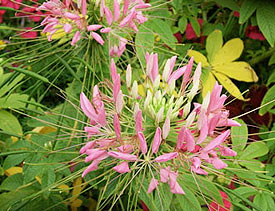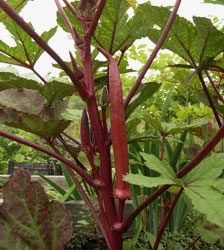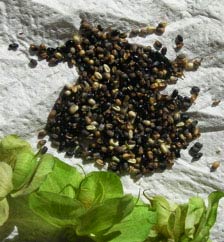
With the arrival of fall the annuals in my garden are winding down. One particular cleome put on a dazzling display this year. It volunteered near my vernal witch hazel and quickly branched into a candelabra of pink and white flowers. Next year I want all my cleomes to grow as robustly and bloom as profusely as this two-toned specimen, so I'm saving the seeds.
With the abundance of inexpensive seed available online and at garden centers, seed saving is no longer a necessity. However, it is still a good practice and a cornerstone of sustainable gardening. Collecting your own seeds saves money, helps preserve desirable traits, and keeps you in good horticultural practice in case you ever want to live off the land.
Conservation biologists and other scientists are assembling seed banks of all the world's plants. They are saving seeds in case of catastrophes like natural disasters or extinction, and to preserve a variety of genes like those found in heirloom crops. In the future, these seed banks could help reestablish natural areas or enable people to grow crops following the devastation of war or other societal upheaval.
A gardener's motives need not be as global or prescient as that of a seed bank. Saving seeds can simply help us grow good plants. In theory, next year's plants will exhibit qualities similar to the parent. I'm saving seeds from this year's star cleome because I want to pass on its vigor, size, and color to next year's plants. (Remember Gregor Mendel's classic pea experiments?)

There is a standard procedure for saving seeds. For annuals and most crops:
Some seeds can actually be "saved" for the following season by sowing them in autumn. Cleome, larkspur, dill, tomato, pumpkin, and many others have seeds that can survive winter temperatures. These plants are called "volunteers" because they will voluntarily sprout throughout the garden in spring. To help them grow where you want them, gather the seed/fruit and remove as much of the husk/pulp as possible. Clear debris from the area where the seeds will be sown. Spread the seeds and gently rake them into the soil. Mark the space as a seed bed to avoid disturbing it later.

Although trickier, perennial seeds can also be saved. Some can be stored dry, like annuals, but others require natural winter conditions. For best results, treat perennial seeds like volunteer annuals and sow in autumn. Seeds are an inexpensive way to propagate pricey perennials, but the time to maturity varies. The perennial Maximillian sunflower (Helianthus maximiliani) can grow from seed to a 6-foot mass of glowing flowers in one season. Conversely, hellebores can take more than a year to reach flowering size. Whether or not it is worth it to save seed from perennials depends on the plant ... and your patience.